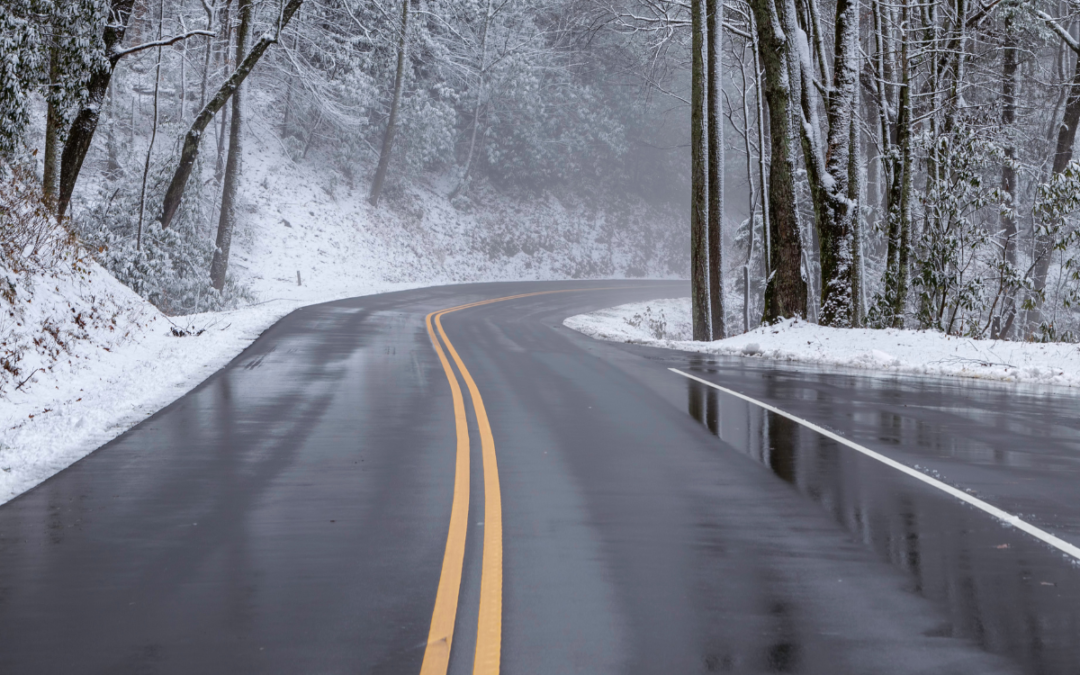Drive Safely on Black Ice
Black ice, a thin coat of highly transparent ice, is one of the most treacherous road conditions for drivers. It earns its name because it blends in with the road surface, making it nearly invisible. Often found on bridges, overpasses, and shaded areas, black ice can catch drivers off guard, leading to dangerous situations. Understanding how to identify and safely navigate black ice is crucial, especially during the winter months.
Identifying Black Ice
The first step in safe driving is knowing how to spot black ice. It tends to form when temperatures are near or below freezing and after precipitation or dew has occurred. Look for slightly glossy surfaces that may appear a little darker and duller than the rest of the pavement. Early mornings and late evenings, when temperatures drop, are prime times for black ice formation. Well-lit areas may help in spotting it, but in many cases, it’s invisible until you’re right on top of it.
Preparing Your Vehicle
Before winter sets in, ensure your vehicle is ready to handle icy conditions:
-
- Tires: Use winter tires for added traction on ice and snow.
- Brakes: Ensure your brakes are in good condition and you know how to use them on slippery surfaces.
- Lights: Keep all lights clean for maximum visibility.
How to Drive on Black Ice
If you find yourself on a road that may have black ice, follow these tips to navigate safely:
Reduce Speed: Slow down gradually. Avoid sudden movements that could cause your vehicle to slide.
Keep Steady: Keep the steering wheel straight. If you need to turn, do so slowly and smoothly to avoid skidding.
Avoid Braking: If possible, don’t brake. If you must brake, do so gently to avoid locking up your wheels and skidding.
Increase Following Distance: Maintain a generous distance from the vehicle in front of you. Stopping distances can be much longer on black ice.
Avoid Hills or Inclines: If you can, choose a route that avoids hills. Black ice can make it impossible to climb hills or stop safely when descending.
What to Do If You Start to Slide
Even with cautious driving, you may find yourself skidding on black ice. Here’s how to handle a slide:
-
- Front-Wheel Slide: If your front wheels lose traction, gently lift your foot off the accelerator and steer in the direction you want to go. Avoid braking hard.
- Rear-Wheel Slide: If the back of your car begins to slide sideways, turn your steering wheel in the same direction that the rear of the vehicle is sliding. For example, if the rear is sliding right, steer right. Once the car starts to straighten out, you can gently steer in the opposite direction to re-align your vehicle.
Additional Safety Tips
-
- Stay Calm: Panic can lead to overcorrecting, which exacerbates the situation. Try to remain calm and make gentle adjustments.
- Use Low Beam Headlights: This can help increase your visibility to others without worsening your own visibility in icy conditions.
- Avoid Cruise Control: In icy conditions, having direct control over your speed is crucial.
Drive Safely on Black Ice
Driving on black ice requires patience, preparation, and an understanding of the proper techniques to maintain control. By following these tips, you can reduce the risk of accidents when encountering this winter hazard. Remember, the best strategy is to avoid driving in icy conditions whenever possible. If you must head out, take it slow, stay alert, and prioritize safety above all else.
Drive with Confidence!
Keep up with all the latest driving news. Expolre our blog packed with essential tips and expert advice on all things related to DRIVING!




